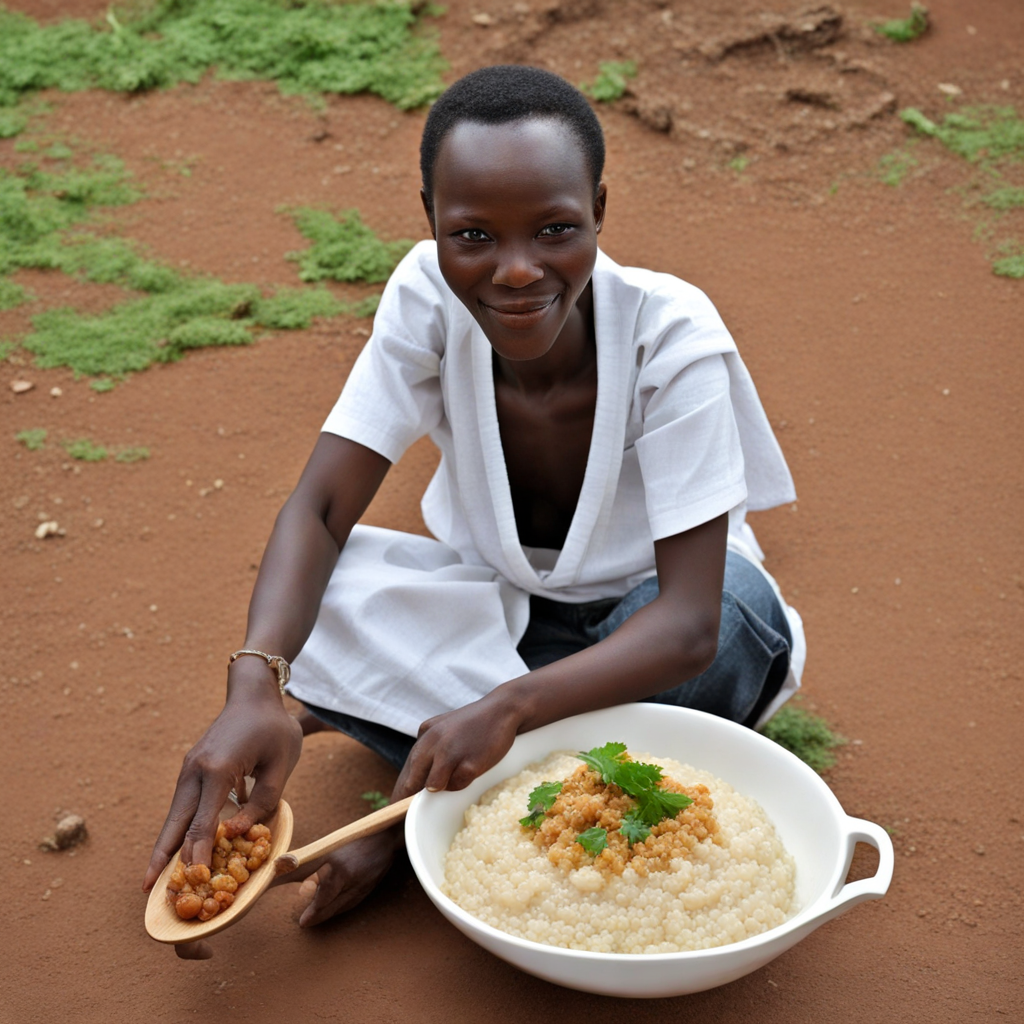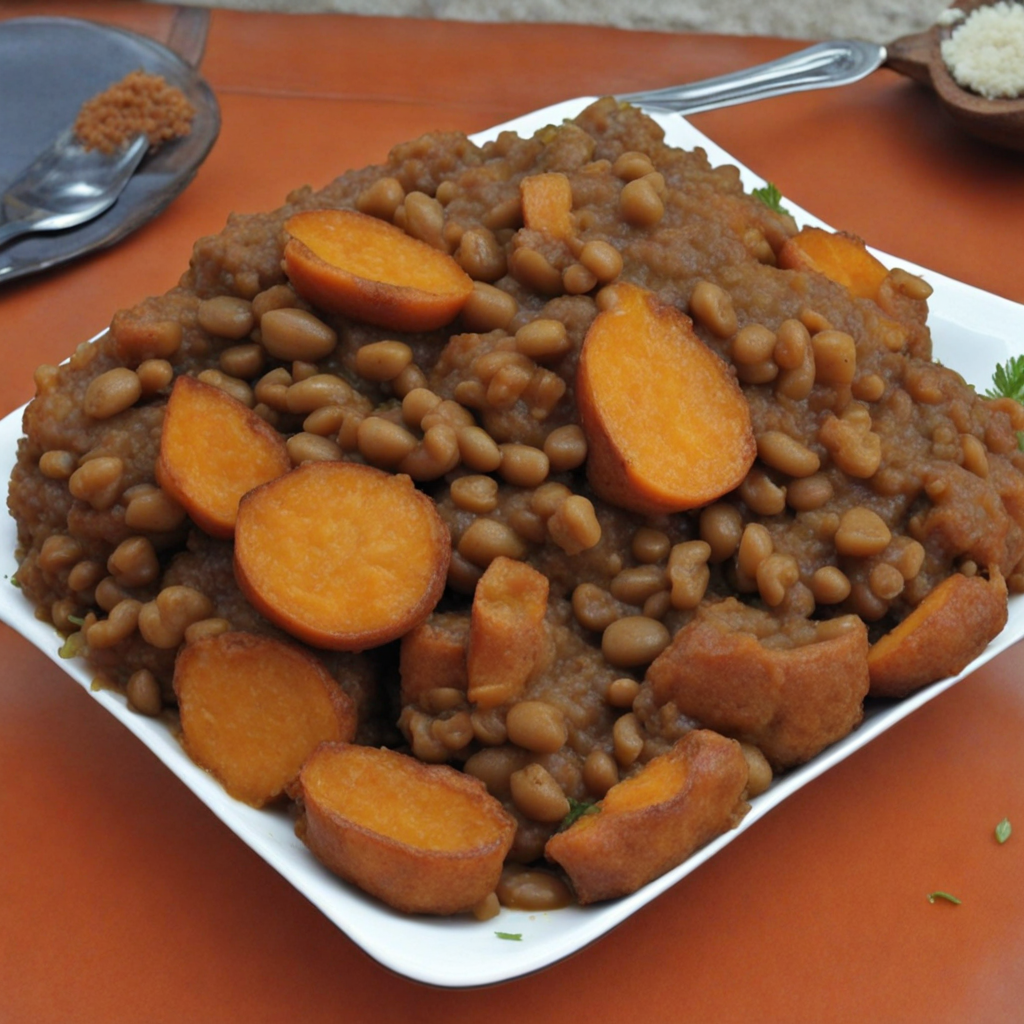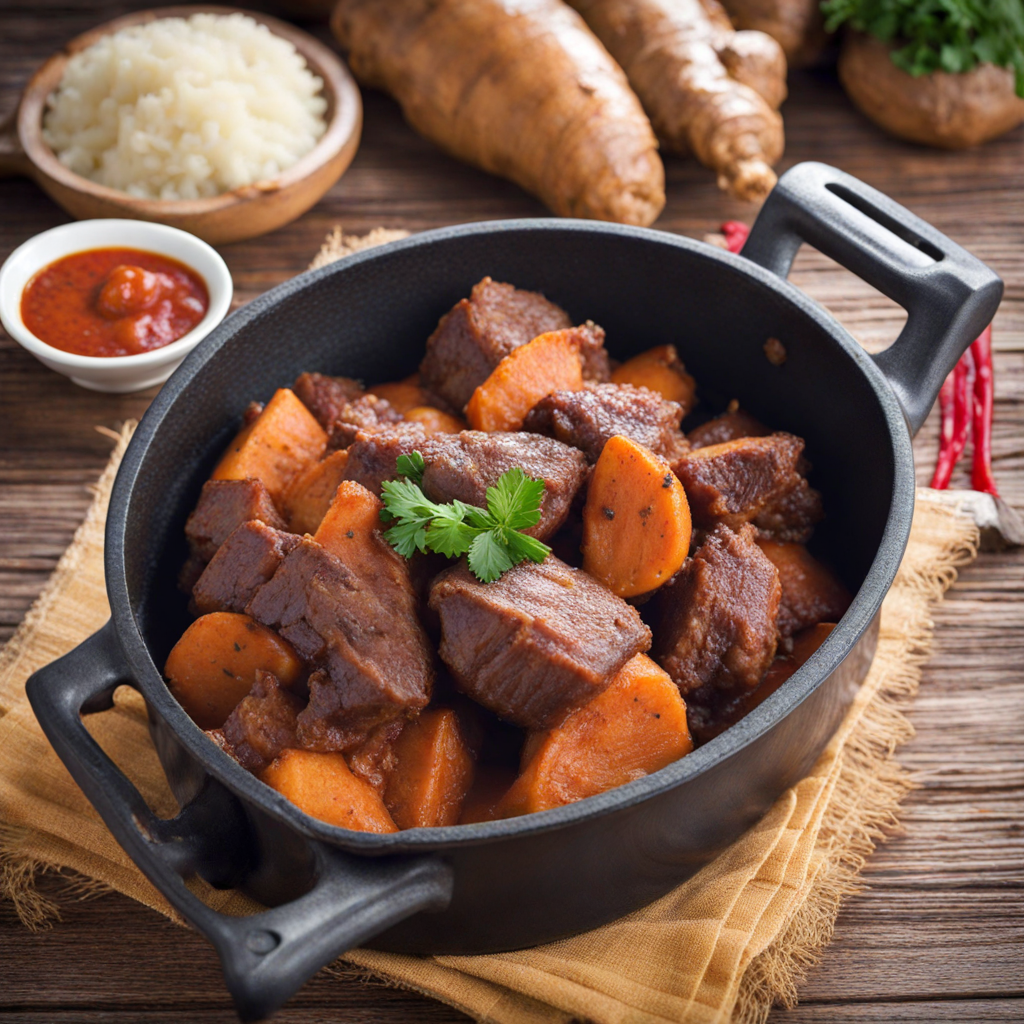Ikibonobono
Ikibonobono is a delightful traditional dish from Rwanda, celebrated for its rich flavors and hearty ingredients. This unique meal primarily features a blend of locally sourced vegetables and protein, often incorporating ingredients like beans, potatoes, and leafy greens. The vegetables are typically simmered together with spices that reflect the vibrant culinary culture of Rwanda, such as garlic, onions, and a touch of chili for added warmth. The result is a comforting stew that showcases the natural sweetness of the vegetables while providing a satisfying depth of flavor from the seasonings. The dish is often served with a side of staple foods, such as ugali or plantains, which help to soak up the flavorful broth. The texture of Ikibonobono is a harmonious balance of softness from the cooked vegetables and a slight bite from the beans, creating a delightful mouthfeel. It’s common for this dish to be enjoyed communally, symbolizing the strong sense of community and togetherness that is a hallmark of Rwandan culture. When paired with a refreshing drink like ikivuguto, a traditional fermented milk, the flavors of Ikibonobono truly shine. Experiencing Ikibonobono is not just about tasting the food; it's about immersing oneself in the essence of Rwandan hospitality and tradition. Each bite tells a story of the land, the people, and their enduring connection to the ingredients they cultivate. For those looking to explore new culinary horizons, Ikibonobono offers a delicious gateway into the heart of Rwandan cuisine, inviting you to savor the warmth and richness of this charming dish.
How It Became This Dish
Ikibonobono: A Culinary Journey Through Rwanda's Heritage Origins of Ikibonobono Ikibonobono, a traditional dish from Rwanda, is more than just a meal; it is a symbol of the country's rich agricultural heritage and communal spirit. The name itself, which translates to "the one that can be eaten with the hands," speaks to the dish's role in fostering connection and togetherness among families and communities. The origins of Ikibonobono can be traced back to the farming communities of Rwanda, where the staple ingredients—plantains (known locally as "amadomahoro") and beans—are cultivated. The fertile volcanic soil of the region has enabled the growth of diverse crops, which have formed the foundation of Rwandan cuisine. Over centuries, these agricultural practices have been refined, and Ikibonobono emerged as a practical and nourishing meal that showcases the country's local produce. Cultural Significance Ikibonobono holds profound cultural significance in Rwandan society. Traditionally, it is served during communal gatherings and celebrations, such as weddings, harvest festivals, and family reunions. The act of sharing this dish reflects the values of hospitality, unity, and respect for communal ties, which are integral to Rwandan culture. In Rwandan households, meals are often communal affairs where family members gather around a shared platter. Ikibonobono, typically presented in a large dish, encourages diners to eat with their hands, fostering a sense of togetherness and intimacy. This practice is not merely about the act of eating, but is deeply rooted in the idea of sharing and connecting with one another, reinforcing the social fabric of the community. Moreover, Ikibonobono is often associated with the concept of abundance, representing the bountiful harvests of the Rwandan fields. In a society where agriculture is a primary livelihood, the dish serves as a reminder of the land's generosity and the hard work of farmers. As such, it plays a role in cultural storytelling, passing down traditions and values from one generation to the next. Ingredients and Preparation The primary ingredients of Ikibonobono are plantains and beans, but regional variations may include additional vegetables such as sweet potatoes, cassava, or pumpkin. The preparation of Ikibonobono is a labor-intensive process that involves peeling, boiling, and mashing the plantains, while the beans are cooked until tender. Once prepared, the two are combined, often seasoned with local spices and sometimes enriched with a bit of oil or butter. Traditionally, the dish may be served with a variety of accompaniments, such as grilled meat, stews, or vegetable dishes, allowing families to customize their meals according to personal tastes and seasonal availability. This adaptability showcases the ingenuity of Rwandan cooks, who have used local resources to create a dish that is both nutritious and satisfying. Development Over Time As Rwanda has evolved, so too has the dish of Ikibonobono. In the pre-colonial era, traditional cooking methods dominated, and meals were prepared using rudimentary tools. With the introduction of colonial influences and the subsequent modernization of society, cooking practices began to change. However, despite these shifts, Ikibonobono has remained a beloved staple, adapting to the changing landscape while retaining its cultural roots. In recent years, as Rwandan cuisine has gained international recognition, Ikibonobono has found its way onto the menus of local eateries and upscale restaurants alike. Chefs are now experimenting with the dish, incorporating modern cooking techniques and flavors while still honoring the traditional aspects. This fusion has led to a revitalization of interest in Rwandan cuisine, encouraging both locals and tourists to explore the culinary heritage of the country. The global movement toward sustainable and locally sourced food has also contributed to the resurgence of traditional dishes like Ikibonobono. As people become more aware of the importance of preserving culinary traditions, there is a growing appreciation for the use of indigenous ingredients and time-honored preparation methods. Initiatives to promote local farming and cooking practices have further enhanced the status of Ikibonobono within the broader context of Rwanda's food culture. Ikibonobono in Contemporary Society In contemporary Rwanda, Ikibonobono continues to play a vital role in both daily life and special occasions. It is common to see this dish served at family gatherings, reflecting the Rwandan ethos of togetherness and community. Furthermore, as the country has made strides in post-genocide reconciliation and rebuilding, communal meals featuring Ikibonobono serve as a powerful reminder of shared experiences and collective healing. The dish has also become a focal point in culinary tourism, with local cooking classes and food tours highlighting Ikibonobono as an essential element of Rwandan culinary identity. Visitors to Rwanda are encouraged to engage with local communities to learn the art of preparing Ikibonobono, deepening their understanding of the culture while savoring the flavors of the country. Moreover, as Rwandan chefs gain recognition on the international stage, they are using platforms to showcase Ikibonobono and other traditional dishes, elevating them to a global audience. This exposure not only highlights the diversity of Rwandan cuisine but also fosters pride among Rwandans in their culinary heritage. Conclusion Ikibonobono is much more than a simple dish; it is a testament to Rwanda's agricultural legacy, cultural values, and communal spirit. Its origins reflect the connection between the land and its people, while its preparation embodies the practice of sharing and unity. As the dish continues to evolve and adapt to contemporary tastes and contexts, it remains an enduring symbol of Rwanda's identity, offering a delicious glimpse into the nation’s soul. In celebrating Ikibonobono, we not only savor its flavors but also honor the rich history and vibrant culture of Rwanda, ensuring that this cherished dish remains a beloved part of the nation's culinary landscape for generations to come.
You may like
Discover local flavors from Rwanda







